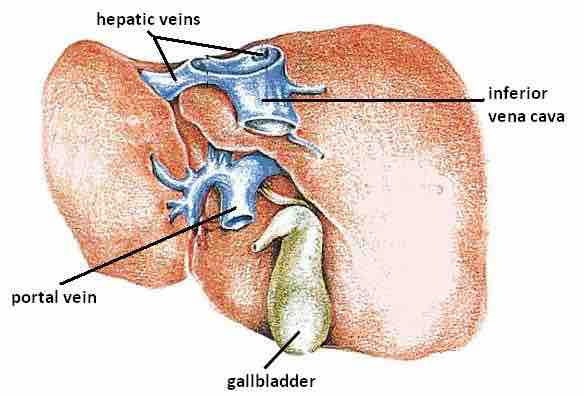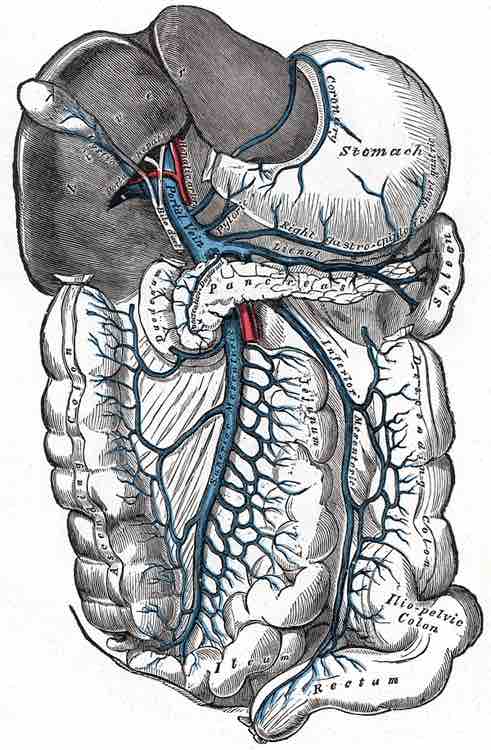In the hepatic portal system, the liver receives a dual blood supply from the hepatic portal vein and hepatic arteries. Supplying approximately 75% of the liver's blood supply, the hepatic portal vein carries venous blood drained from the spleen, gastrointestinal tract and its associated organs . The hepatic arteries supply arterial blood to the liver, accounting for the remainder of its blood flow. Oxygen is provided from both sources; approximately half of the liver's oxygen demand is met by the hepatic portal vein, and half is met by the hepatic arteries. Blood flows through the liver tissue and empties into the central vein of each lobule. The central veins coalesce into hepatic veins, which collects blood leaving the liver and bring it to the heart.

Hepatic Veins
Image of liver with labeled hepatic veins.
A portal system is a venous structure that enables blood from one set of capillary beds to drain into another set of capillary beds, without first returning this blood to the heart. The majority of capillaries in the body drain directly into the heart, making portal systems unusual. The hepatic portal system connects the capillaries of the gastrointestinal tract with the capillaries in the liver . Nutrient-rich blood leaves the gastrointestinal tract and is first brought to the liver for processing before being sent to the heart. Here, carbohydrates and amino acids can be stored or used to make new proteins and carbohydrates. The liver also removes vitamins and cofactors from the blood for storage, as well as filtering any toxins that may have been absorbed along with the food. When any of these stored substances are needed, the liver releases them back into circulation through the hepatic veins.

Hepatic Portal Circulation
Diagram showing the hepatic portal vein and its territory.